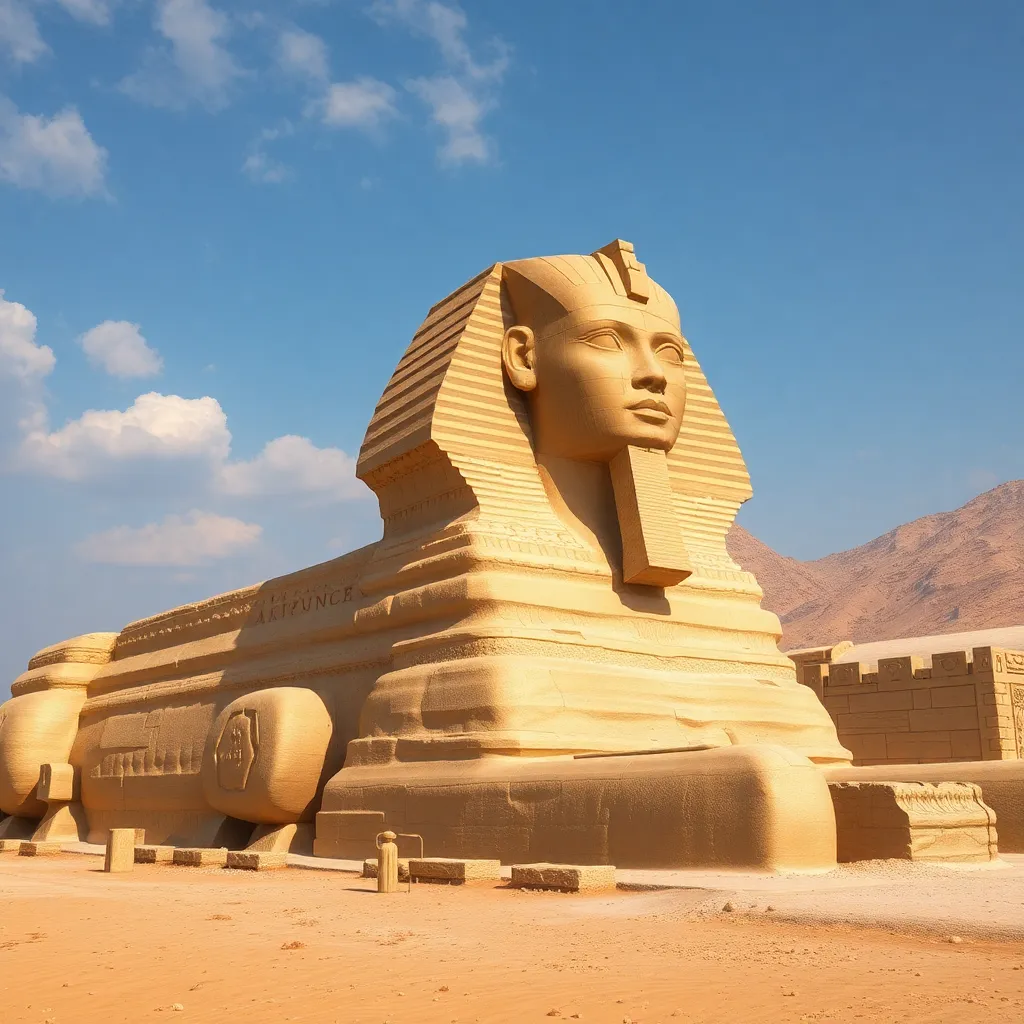The Sphinx’s Riddle: A Journey Through Time
I. Introduction
The Sphinx, an iconic figure of ancient mythology, has long captivated the imagination of scholars, artists, and curious minds alike. With its lion’s body and human head, the Sphinx stands as a testament to the cultural and spiritual significance of ancient Egypt. It symbolizes strength, wisdom, and the enigma of existence. Among the myriad tales associated with the Sphinx, the most famous is undoubtedly its riddle, which has echoed through ages, challenging the intellect of those who dare to confront it.
This article aims to delve into the historical, literary, and philosophical dimensions of the Sphinx’s riddle. By exploring its origins, meanings, and influences, we uncover the layers of significance that this riddle has held across time and cultures.
II. The Origin of the Sphinx
The Sphinx has its roots in ancient Egyptian civilization, where it was revered not only as a guardian of sacred spaces but also as a symbol of royal power and divine protection. The Great Sphinx of Giza, constructed during the reign of Pharaoh Khafre, is among the largest and oldest statues in the world, standing sentinel over the Giza Plateau.
In Greek mythology, the Sphinx takes on a different yet equally compelling role. The most famous story involves Oedipus, who encounters the Sphinx on his journey. The Sphinx poses its riddle to travelers, devouring those who fail to provide the correct answer, which amplifies its reputation as a creature of both mystery and menace.
Across various cultures, the Sphinx symbolizes:
- Enigmas and riddles
- Wisdom and knowledge
- Guardianship and protection
III. The Riddle of the Sphinx
The Sphinx’s riddle is famously stated as: What walks on four legs in the morning, two legs at noon, and three legs in the evening? At first glance, this riddle appears deceptively simple, yet it encapsulates profound truths about the human condition.
Analyzing the structure and meaning of the riddle reveals its depth:
- Four legs in the morning: This refers to a baby crawling on all fours.
- Two legs at noon: This symbolizes adulthood, when a person walks upright.
- Three legs in the evening: This denotes old age, where an individual uses a cane for support.
The riddle thus serves as a metaphor for the stages of human life, emphasizing the journey from infancy to old age.
Scholars and thinkers have proposed various interpretations of the riddle, suggesting it reflects themes of vulnerability, the passage of time, and the inevitability of mortality.
IV. Oedipus and the Resolution of the Riddle
The tale of Oedipus is intricately linked with the Sphinx’s riddle. As he travels to Thebes, Oedipus encounters the Sphinx, which has been terrorizing the city. To save Thebes and fulfill his destiny, he must answer the riddle correctly. With insight and courage, Oedipus responds, Man, thus revealing the answer hidden within the riddle.
His answer not only saves Thebes but also leads to his own rise to power as the new king. However, this victory is bittersweet, as it sets in motion the tragic events that will ultimately lead to his downfall. The riddle serves as a pivotal moment in Oedipus’s story, marking the intersection of fate, knowledge, and consequence.
V. The Riddle’s Influence on Literature and Philosophy
The Sphinx’s riddle has left an indelible mark on classical literature and beyond. It has been referenced and adapted in various works, illustrating its timeless appeal. Notable adaptations include:
- Jean-Paul Sartre’s philosophical explorations of existence
- Modern retellings in novels and plays
- Symbolic representations in poetry
Philosophically, the riddle prompts profound inquiries into the nature of existence, knowledge, and the human experience. Ancient thinkers like Socrates pondered its implications, while modern philosophers continue to draw upon its themes in discussions of identity and consciousness.
The riddle also acts as a metaphor for human existence, representing the quest for understanding and the search for truth amidst the complexities of life.
VI. Artistic Representations of the Sphinx and Its Riddle
The Sphinx has inspired countless artistic representations, from ancient sculptures to modern interpretations. Artists have sought to capture the essence of the Sphinx, often portraying it as a symbol of mystery and enigma.
Some notable forms of artistic expression include:
- Sculptures and monuments in ancient Egypt
- Paintings inspired by the mythology of the Sphinx
- Contemporary installations and performances exploring its themes
In popular culture, the Sphinx continues to appear in various media, including films, literature, and theater, signifying its enduring legacy as a symbol of mystery and the unknown.
VII. Modern Interpretations and Relevance
In contemporary discussions, the Sphinx’s riddle resonates with themes of identity and existence. It challenges individuals to reflect on their own life journeys and the stages of human development. The riddle serves as a catalyst for critical thinking, encouraging problem-solving and introspection.
Modern audiences find relevance in the riddle as it encapsulates universal truths about the human experience:
- The inevitability of change and growth
- The quest for knowledge and understanding
- The continuous cycle of life and death
VIII. Conclusion
In summary, the Sphinx holds immense significance in ancient mythology, and its riddle remains a timeless enigma that continues to challenge and inspire. The exploration of its origins, meanings, and influences reveals the profound lessons embedded within the riddle.
Reflecting on the lessons learned from the riddle throughout history invites us to consider our own journeys and the nature of existence itself. The Sphinx stands as a bridge between past and present, inviting future generations to ponder the mysteries of life and the knowledge we seek.




